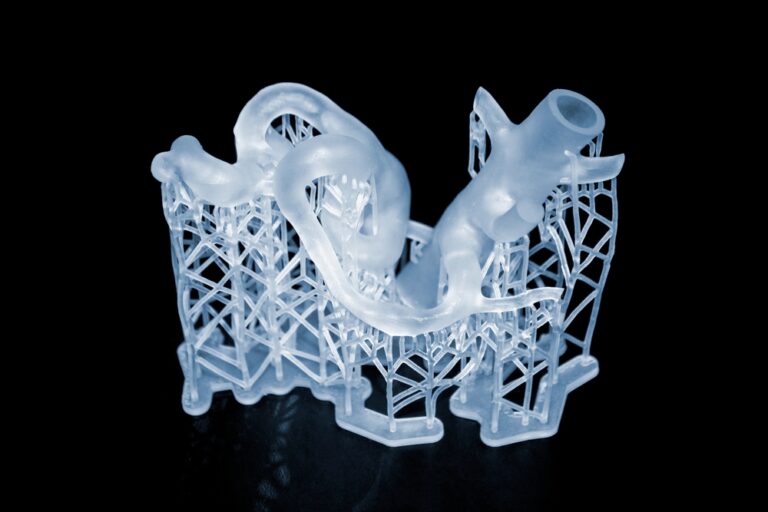Micro additive manufacturing, also known as micro 3D printing, represents a specialized branch of 3D printing that focuses on the production of extremely detailed, miniature parts. Unlike traditional 3D printing, which operates at a larger scale, micro 3D printing can create parts ranging from 50 microns to sub-micron sizes. This capability has made the technology essential for industries requiring high precision, including medical devices, electronics, optics, and aerospace. By delivering intricate, tiny parts, micro 3D printing has become a viable alternative to conventional manufacturing techniques, such as injection molding, which can be prohibitively expensive for small-scale production.
Technological Advances Fueling Growth
Several technological advancements have played a crucial role in the growth of micro 3D printing. One of the most important developments is the advent of Projection Micro Stereolithography (PµSL). This technology, pioneered by companies like Boston Micro Fabrication, allows the production of micro-scale parts with extraordinary precision and complexity. PµSL uses a light source to cure layers of resin, creating parts with intricate geometries that are difficult, if not impossible, to achieve using conventional manufacturing methods. The ability to create such complex designs with high precision is one of the key reasons for the widespread adoption of micro 3D printing.
In addition to materials and precision, improvements in automation and production speed have made micro 3D printing more efficient. Enhanced optical systems and mechanical components enable the precise control of tolerances down to microns, allowing for faster production times without sacrificing quality. This increased efficiency has made micro 3D printing a competitive option for low- to medium-volume production runs, further reducing costs and speeding up the prototyping and manufacturing processes.
Applications of Micro 3D Printing
Micro 3D printing has found its place in several industries where precision and miniaturization are critical. One of the most prominent fields that benefit from this technology is the medical device industry. Medical applications demand highly customized and precise components, such as implants, microfluidic devices, and ultra-thin cosmetic veneers. Micro 3D printing allows for creating patient-specific parts, like customized stents and scaffolds used in stem cell research. The ability to produce such detailed and accurate components is essential for advancing medical technologies and improving patient outcomes.
Another key area where micro 3D printing is making an impact is electronics and optics. As modern electronic devices continue to shrink, the need for highly precise, miniature parts grows. Micro 3D printing enables the production of components for high-performance cameras, sensors, and other compact devices where miniaturization is essential. The technology ensures that these parts meet the strict performance and space optimization requirements necessary in today’s competitive electronics market.
The aerospace industry also benefits from micro 3D printing, as it requires lightweight yet durable parts that can withstand harsh environments. Micro 3D printing provides a solution by enabling the production of intricate, lightweight components that meet the industry’s demanding specifications. These parts not only reduce the overall weight of aircraft and spacecraft but also offer the high precision needed for performance-critical applications.
Future Growth and Emerging Applications
As micro 3D printing technology continues to evolve, its future looks promising, with new applications emerging in various industries. One area with significant potential is next-generation medical implants. As customization becomes more important in healthcare, medical micro 3D printing could be used to create highly personalized implants, such as stents or scaffolds for tissue regeneration. These innovations would allow for better patient outcomes and improved treatment options in a range of medical fields.
Another emerging application of micro 3D printing is in advanced photonics and optics. As industries such as telecommunications and computing demand increasingly precise and compact optical components, micro 3D printing is poised to revolutionize the field. The ability to produce high-precision optics at a micro-scale will enable the development of smaller, more efficient devices, driving innovation in multiple sectors.
Challenges Facing Micro 3D Printing
Despite its many advantages, micro 3D printing faces several challenges that must be addressed for it to achieve its full potential. One of the primary limitations is the range of materials available for use in the process. While advancements are being made, the selection of materials that offer the required mechanical properties and durability for certain applications remains limited. Expanding the range of usable materials will be essential for micro 3D printing to become more widely adopted across different industries.
Another significant challenge is scalability. While micro 3D printing is highly effective for producing small- to medium-sized production runs, scaling it up for mass production is still a work in progress. For larger volumes, traditional manufacturing methods are often faster and more cost-effective. Additionally, the speed and cost of micro 3D printing can become prohibitive when producing larger parts or high volumes, as the process remains slower and more expensive than conventional techniques in such cases.
Conclusion
Micro 3D printing is transforming industries that rely on extreme precision and miniaturization, offering new possibilities for innovation in fields like medical devices, electronics, and aerospace. As these issues are addressed, micro 3D printing is poised to play an increasingly important role in the future of precision manufacturing.



